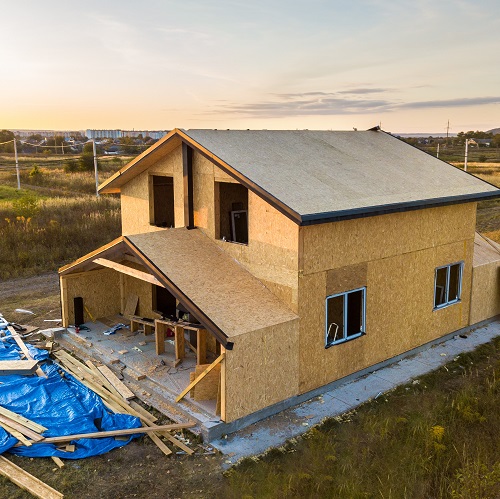 Rising material prices, labour shortages, interest rate hikes and rainy weather have created a perfect storm for the construction industry in the past 12 months, sending many builders to the wall.
Rising material prices, labour shortages, interest rate hikes and rainy weather have created a perfect storm for the construction industry in the past 12 months, sending many builders to the wall.
Of all these factors, weather is the one that most people would cite as being beyond human control. However, a new study out of the UK and Australia suggests this may not be the case.
Engineers from , Birmingham, and the (UniSA) have calculated the potential cost savings for builders using modular production techniques where much of the construction happens offsite in controlled conditions.
Buildings are produced in modules in a factory, using the same materials and building codes, but completed in about half the time, with less waste and no building delays due to poor weather.
The researchers produced a cost model that estimated the impact of weather by season on each building activity, including portions of the build (such as bathroom pods) up to the entire structure.
The savings come in at approximately AUD$40,000 (£21,000) on a build worth $6.4 million (£3.4m). This 0.6% saving may initially seem minor but takes on significant meaning in the current climate where average construction profit margins are just 4.2%.
The are published in the .
Co-author of the paper , a senior lecturer in STEM at UniSA, says weather is often identified as one of the top causes for delays and subsequent cost increases in the building industry, affecting 45% of projects worldwide.
“By removing many of the onsite activities and replacing them with modules built offsite, builders can minimise construction delays caused by weather, thereby keeping the costs from blowing out,” Dr Kim says.
Incessant rain in Australia’s eastern states throughout 2022 led to construction costs ballooning, according to the , exposing builders to unbudgeted increases and heavy losses.
However, rainfall is the not the only key weather pressure for the construction industry.
Global warming is expected to push temperatures up worldwide, including in Australia, making working conditions more difficult on construction sites, the study authors point out.
“There are many pressures on the construction industry right now, including lack of skilled labour, reductions in profit margins, lack of sustainable materials and low productivity. The financial implications of weather are rarely considered except in extreme cases as the client normally bears the cost,” Dr Kim says.
While modular construction techniques have several benefits – including faster builds and a more controlled working environment which protects high-quality materials from the weather – there are some drawbacks: a limited supply chain and lack of flexibility in both design and supply. The upfront costs of modular components are also expensive, but this needs to be weighed up against losses incurred by weather holdups.
“The global housing sector is dominated by traditional construction methods, but the industry is approaching a crisis point – particularly in relation to a – that may force a change to modular and other offsite techniques,” Dr Kim says.
“The Federal Government has set a target of delivering one million affordable homes over five years from 2024. To ensure this target is met, has mandated modular construction for 80% of social housing projects by 2030.”
Construction costs are typically between 43 and 46% of overall costs, which is why much of the existing research focuses on this area.
“When working in a factory environment there is a more protected and controlled atmosphere, and this will improve worker welfare, productivity and reduce health and safety costs, with fewer loss of workdays due to ill health and accident.”
Dr Kim says that the potential cost saving will vary, depending on where the project is built, when the project is started and how long the build is.
Notes for editors




